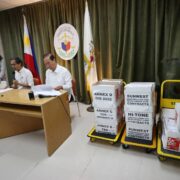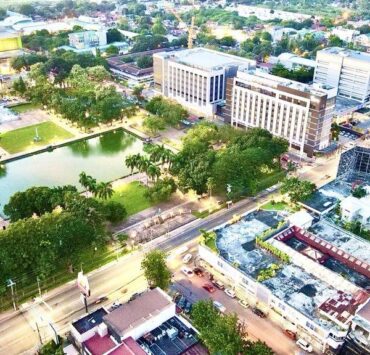Slight hike in rice prices raise Cordillera inflation in October

BAGUIO CITY – A slight uptick in the price of rice had raised inflation in the Cordillera to 1.4 percent in October from the lowest 1.2 percent in September amidst a three-month inflation slowdown.
The price of cooking fuel like LPG (liquefied petroleum gas), rent, electricity and even outdoor dining also contributed to the small spike after regional inflation in the past months sped downwards following a peak this year of 4.8 percent in July, said Aldrin Federico Bahit Jr, chief statistician of the Philippine Statistics Authority (PSA) in the Cordillera, during a Wednesday briefing.
Grain and grain products like rice saw an uptrend from 8.4 percent in September to 9.2 percent a month later in the Cordillera provinces of Ifugao, Kalinga, Apayao, Abra, Benguet and Mountain Province, he reported.
Inflation for rice, in particular, rose by one point from a 10 percent rate in September to 11 percent in October.
Most highland communities grow rice both as staple food and for their cultural or ritual obligations, particularly top producer Kalinga which was expected to produce as much as 119,733 metric tons (MT) of grains this year, and the renowned Ifugao rice terraces which targeted a 36,704 MT production for 2024, according to the latest agricultural data.
But Ifugao’s inflation rate for grains rose from 2.5 percent in September to 6.4 percent in October, PSA data shows. The province’s overall inflation leapt to 0.4 percent in October from a very low -1.1 percent rate in September.
In Kalinga, grains and related products saw its inflation rate climb from 10.6 percent in September to 14 percent in October. Its overall inflation rate also increased to 1.7 percent last month after achieving a much slower 0.4 percent rate in September.
Extreme weather
Cordillera food production has been vulnerable to increasingly extreme weather, from the drought in April and May to the frequent typhoons during this year’s monsoon period, which occasionally affects supplies.
But farmers have already adapted.
Apayao Vice Gov. Remy Albano, who is president of irrigators associations in the Cordillera, said rice farmers, who took part in contract growing arrangements with the National Irrigation Administration (NIA), plan to increase their annual rice cropping seasons from the traditional two periods to three in order to generate more quality grains at reduced prices.
Albano discussed his plan during NIA’s Bagong Lipunan agency briefing at La Trinidad town in Benguet province on Oct. 22.
Meat products’ inflation also rose from 3.1 percent in September to 3.9 percent last month, while vegetables and tubers followed a similar momentum with a -26.6 percent inflation rate measured in September rising to -21.1 percent by October, Bahit said this week.
Transportation
Highland inflation has been more tempered for transportation (a slowdown from 0.3 percent in September to -2.6 percent in October), information and communication (or telephone and internet costs that slid from 0.9 percent in September down to 0.8 percent in October), and recreation, sports and culture (1.4 percent in October down from 1.8 percent in September).
Inflation in the summer capital rose to 1.6 percent in October after benefiting from the past month’s inflationary descent from its peak 4.1 percent rate in June to 4 percent in July, 2.9 percent in August and 1.5 percent in September.
The PSA said Baguio’s inflation accelerated primarily due to food costs (from a -1.8 percent rate in September to -0.7 percent in October for Food and Non-Alcoholic Beverages) particularly with vegetables and tubers (which rose from -28.6 percent in September to -21.9 percent in October).
Also contributing to Baguio inflation were transport (-06 percent in September upped to -0.2 percent in October) because of the hike in diesel and gasoline.

















